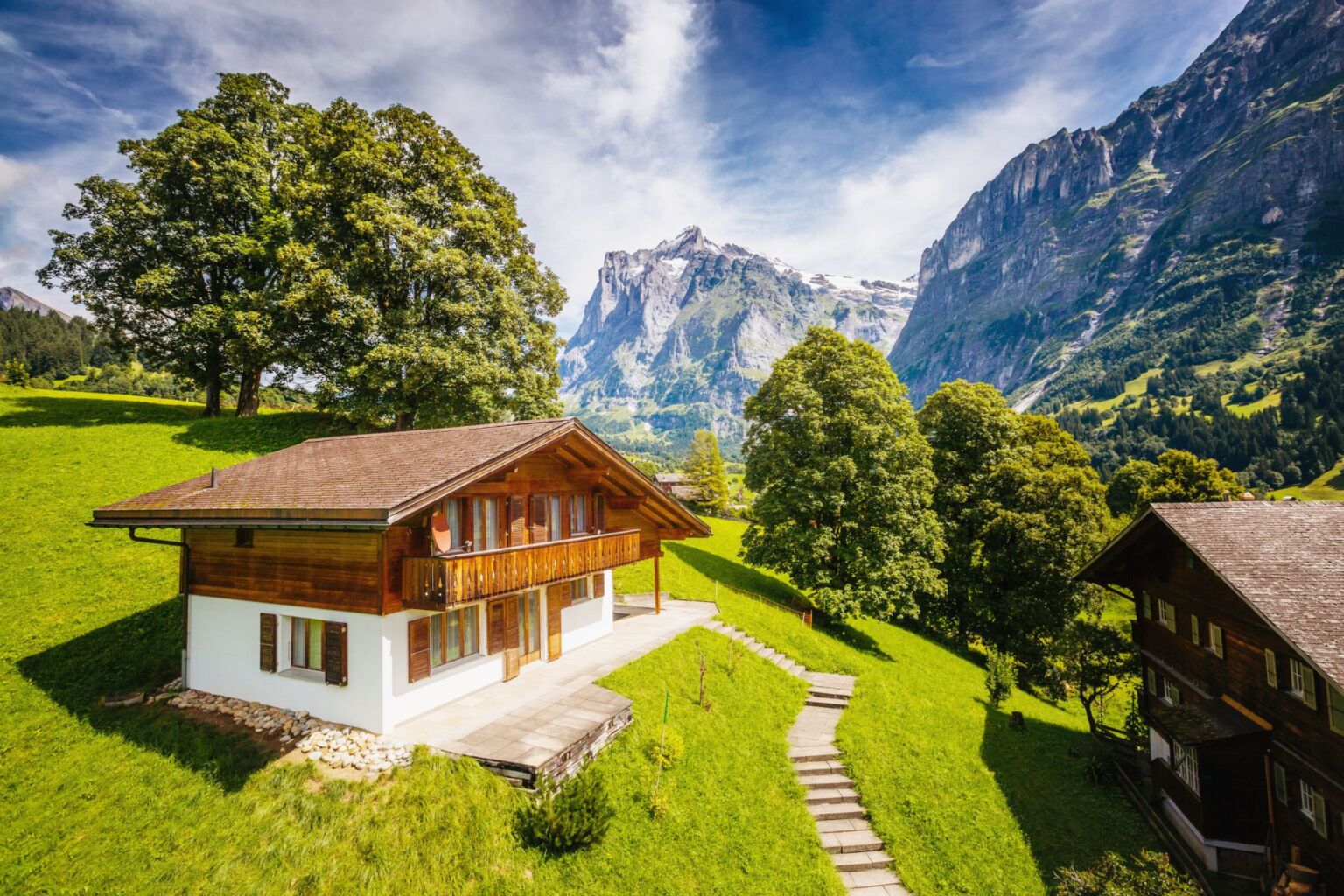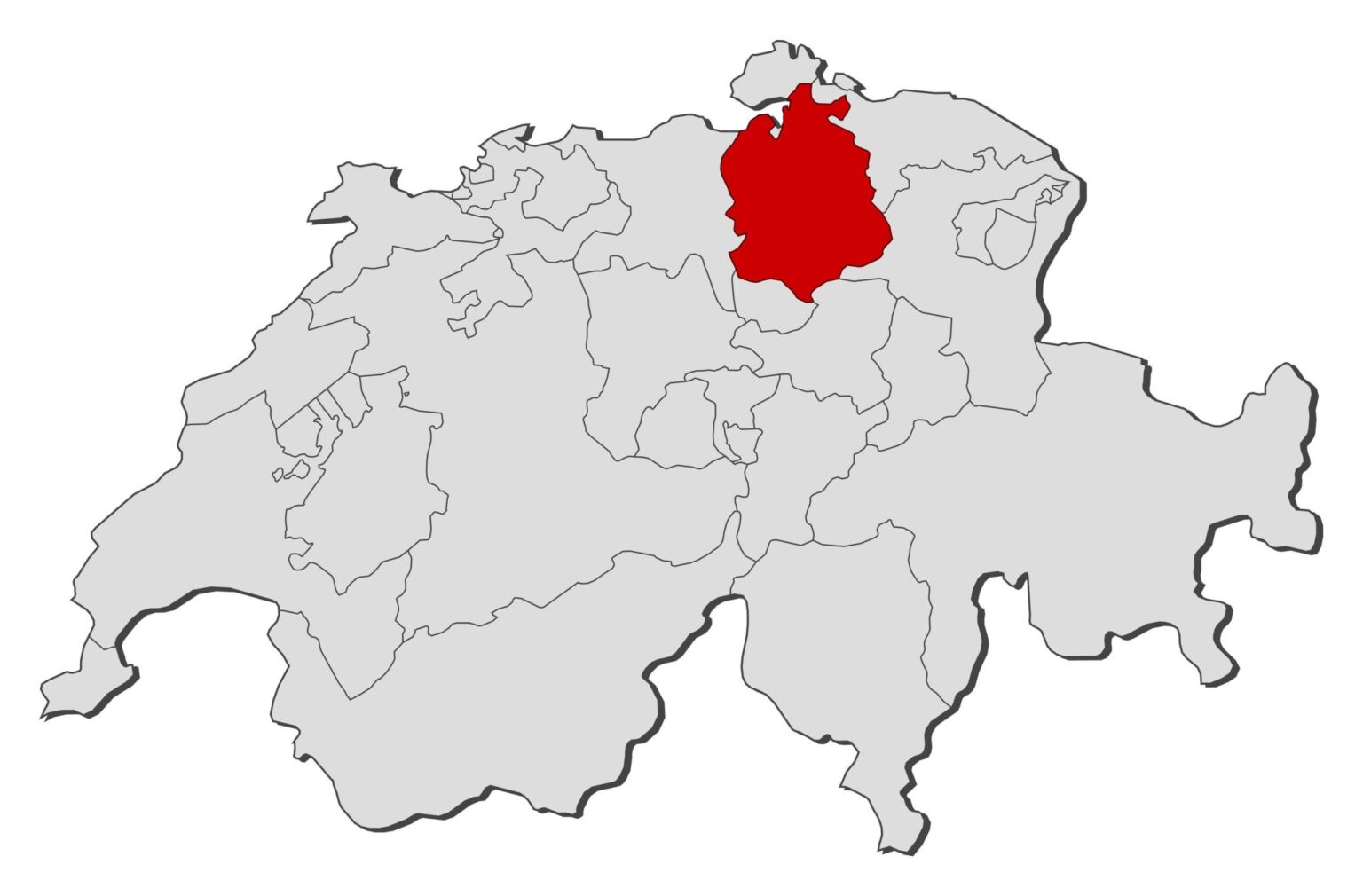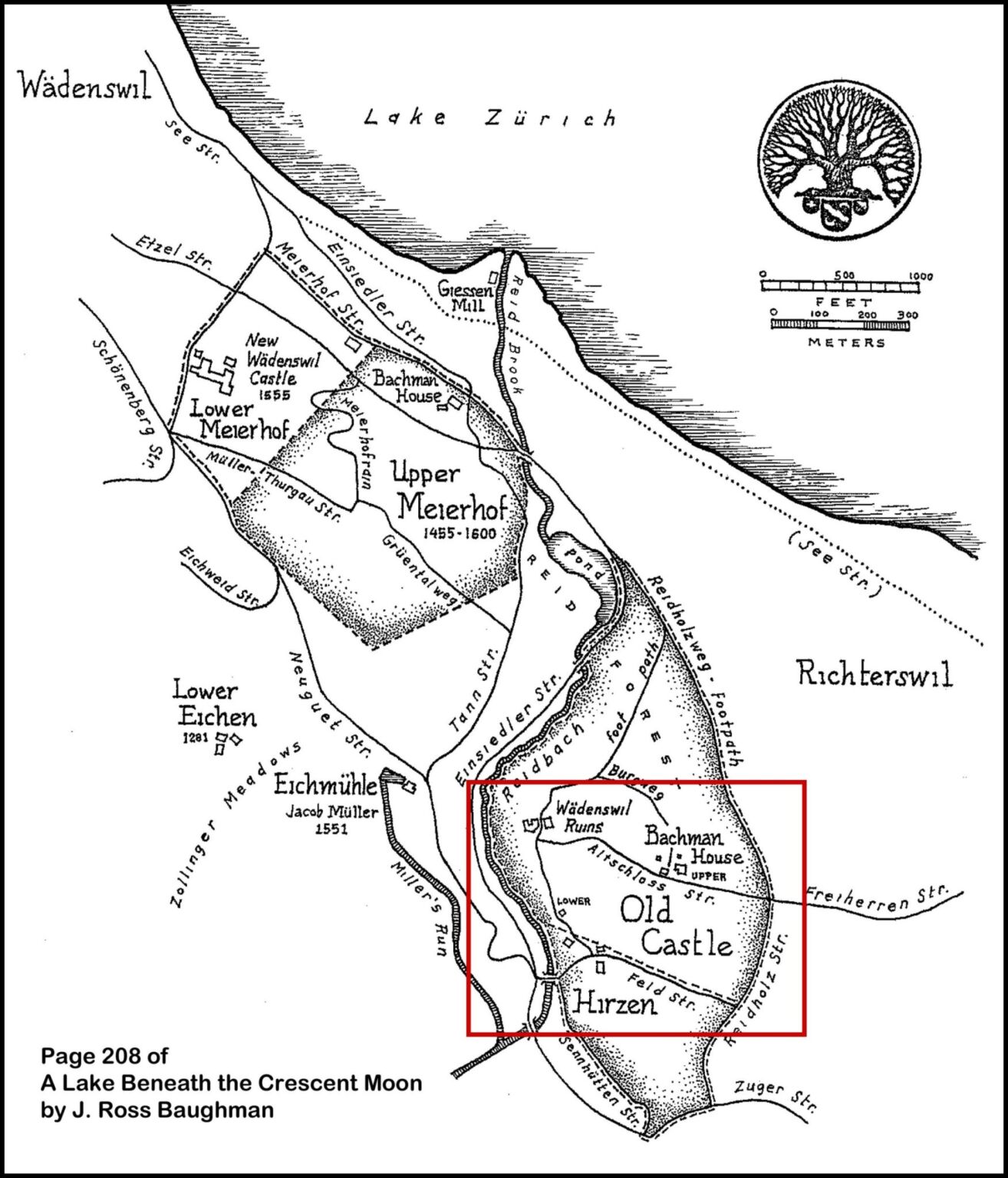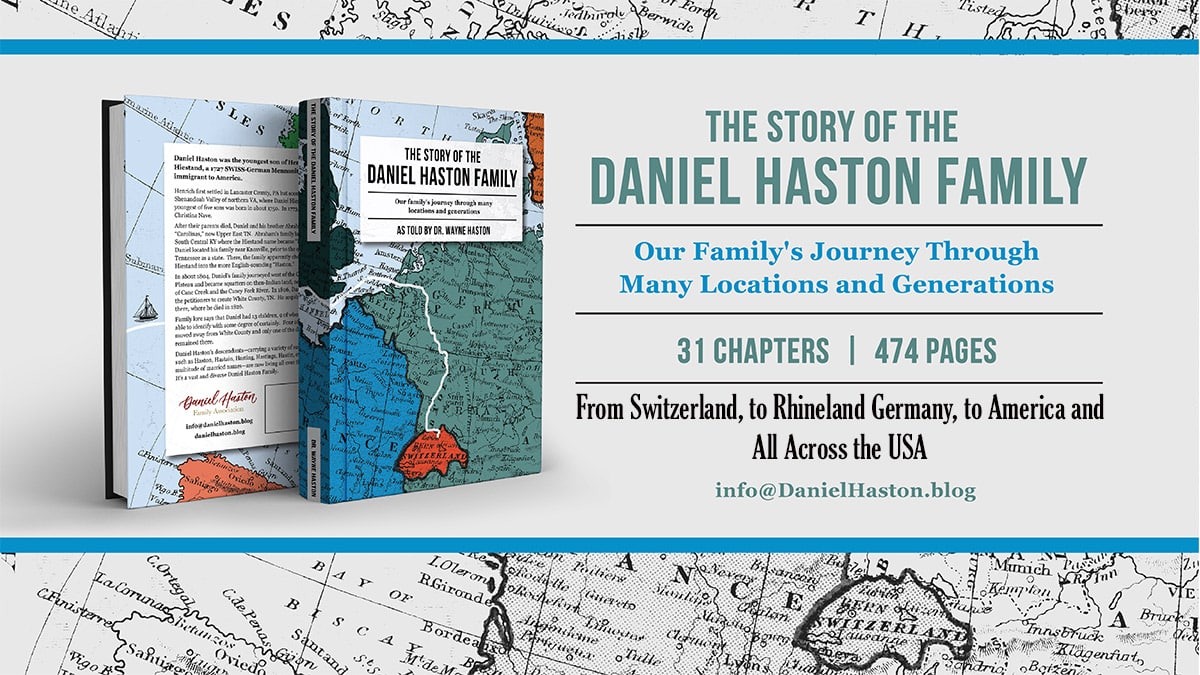02 - Our Haston Roots are in Switzerland

For many years, even the most diligent researchers in the extended Daniel Haston family would hit the so-called genealogical “brick wall” with appearances of Daniel in western North Carolina, prior to the formation of the state of Tennessee. They could establish their family connections back to Daniel, but could not document a connection from him to the family he came from. Nor could they prove his European ethnicity. As we saw in the previous chapter, there were many attempts to leap over that brick wall based on family folklore. Some of those leaps landed in England, some in Scotland or Ireland, some in Holland, and some in Germany. Obviously, most of those leaps were blind and they landed in the wrong countries. There is no doubt now–our Haston roots were deeply planted in Swiss soil.
Canton Zurich

The earliest documented evidence, available now, for the whereabouts of any of our Hiestand ancestors is a 1401 tax record in Zürich Switzerland. So, we can say with confidence that the Hiestand family roots can be traced back to Switzerland, specifically Canton Zürich in Switzerland. In case you are wondering, a canton is a territorial district of Switzerland, much like a state in the United States.
The Swiss element among the Pennsylvania Germans is the largest of the ethnic components of the population. It is particularly strong in Lancaster, Lebanon, and other counties where there are Mennonite and Amish settlements. These descendants of the Swiss Anabaptists have given their character from Canton Bern are Stauffer, Schenk, Longenecker, Forney [Fahrni], Eby, [Aebi]; from Canton Zürich, Landis, Nissley [Nussli], Denlinger [Dandliker], Hiestand, and others.[i]
[i] Don Yoder, “Problems and Resources in Pennsylvania German Genealogical Research,” in Pennsylvania German Roots Across the Ocean, ed. Marion Egge (Philadelphia: Genealogical Society of Pennsylvania, 2000), 9.
Wädenswil and Richterswil
The early Hiestand family was primarily, if not exclusively, a Canton Zürich family, concentrated in and around Wädenswil (pronounced “vey’-denz-veel”) and Richterswil (pronounced “RRrrihcht’-urz-veel”, with a rolled-R at the beginning), including the village and district of Horgen–on the southern shore of Lake Zürich about 10 miles east of the city of Zürich.
According to one source, “Hiestand” (Hier Stehel) probably means “Stand here!”[i] The origin of the Hiestand surname may be related to a significant event in the family’s experience. We cannot be sure, but perhaps our ancestors were granted rights to a certain plot of land and were told to stand there—that was their land. Or maybe they were just stubborn people who were known for taking a stand. We do know from history of the Wädenswil-Richterswil area that the people there were known for being fiercely independent. But maybe “Stand here!” was assigned because of another marker event in the history of our Swiss family, an event that eludes our knowledge of the facts or even our imagination.
[i] Tobler-Meyer, Deutsche Familiennamen. (Zürich: Albert Muller’s Yerlag, 1894), 175.
Wädenswil

According to the History of Wädenswil, written by Johann Heinrich Kagi and published in 1867, the village was nearly 1000 years old at the time of his writing.[i]
But while the actual village of Wädenswil may have started at about the time Kagi mentioned, in his book Apart from this World, J. Ross Baughman describes multiple civilizations at the Wädenswil site, going back centuries into pre-historic eras.[ii] Apparently, it was an attractive home site for the earliest pre-historic inhabitants who lived along the shore of Lake Zürich.
[i] Johann Heinrich Kagi, History of Wädenswil (1867): cited in Oscar Kuhnz, “The Homeland of the First Settlers in Lancaster County,” (Lancaster, PA: Papers Read Before the Lancaster County Historical Society, XXI, no. 2, February, 1917): 24.
[ii] J. Ross Baughman, Apart from this World. (Edinburgh, VA: Shenandoah History Publishers, 1997), 5-9.
In the final centuries of the Middle Ages, Wädenswil became known for the Catholic Order of St. John and the “old” Wädenswil Castle, the ruins of which currently exist within the municipality of nearby Richterswil.


Richterswil

One mile southeast of Wädenswil, along the shore, is Richterswil.
Johann Georg Ritter von Zimmermann was an 18th Century Swiss-born philosopher, naturalist, and physician whose books made a great impact throughout Europe.
His book Solitude was translated into almost European language and had great impact on European thought. His visit to Richterswil in 1775, made a deep impression on him. And it gives us a vivid mental picture of the village where some of our Swiss ancestors lived.
At the village of Richterswil, a few leagues from Zürich, in a situation still more delicious and serene…surrounded by every object the most smiling, beautiful, and sublime that Switzerland presents….
The village is situated on the borders of the Lake, at a place where two projecting points of land form a natural bay of nearly half a league.
The mountains extend themselves from the south to the west: the village of Richterswil, is situated at their feet upon the banks of the lake: deep forests of firs cover the summit, and the middle is filled with fruit trees, interspersed with rich fallows and fertile pasture, among which, at certain distances, a few houses are scattered. The village itself is neat, the streets are paved, and the houses, built of stone, are painted on the outside. Around the village are walks formed on the banks of the lake, or cut through shady forests to the hills; and on every side scenes, beautiful or sublime, strike they the eye while they ravish the heart of the admiring traveler.
Every acre of this charming country is in the highest degree of cultivation and improvement. No part of it has suffered to lie untilled; every hand is at work; and men, women, and children, from infancy to age, are all usefully employed.[i]
[i] M. Zimmermann, Solitude: Considered, With Respect to its Influence Upon the Mind and the Heart. (1825; reprinted, www.forgottenbooks.com, 2015), 234-236.
The People of Wädenswil and Richterswil
The people of Richterswil and Wädenswil established quite a reputation for revolting against civic and religious authorities they deemed to be unjust. In the following chapter, we will learn that the so-called “Radical Reformation,” the Anabaptist revolt against Ulrich Zwingli and the Swiss Reformed Church. This religious revolt became deeply entrenched in Richterswil, Wädenswil, and surrounding villages, soon after the movement’s 1525 beginning. But I will hold that story for the next chapter.
Life was hard in old-time Wädenswil and Richterswil, Switzerland! Near-perpetual warfare, epidemics such as the Black Plague that wiped out a sizeable percentage of Europe’s population, extreme winters and famines, oppression of peasants by ruling authorities, and the unmerciful acts of religious persecution that we will see in the following chapter. How is it that any of our ancestors survived? As descendants of some of these Swiss villagers, we are fortunate to be alive. Think of this: If just one of our direct-descent ancestors had died before our next generation ancestor had been born, we would never have been born. Now, what are the odds that we are here? Hmmm…
Flight over Richterswil at Sunrise
If you enjoyed this article, please share it with others who might be interested.

